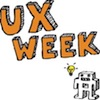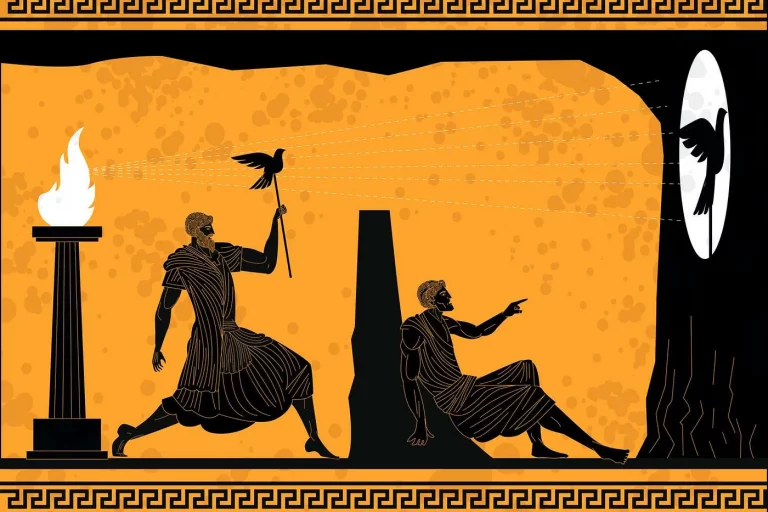Videos of UX Week 2010
Data informed, not data driven
by Adam Mosseri, Facebook
At Facebook, analytics play a critical role in informing design decisions, but internally there’s a wariness of the idea of design by numbers.
In this talk we’ll hear about three primary ways Facebook uses quantitative data: optimizing small but important interactions; finding pain points in existing work flows; and setting high level success metrics for large projects.
We’ll hear Facebook’s take on how they think they should improve their ability to quantify some of the less tangible data points, like brand perception and long term network value. Those analytics can begin to perform as counter metrics so that they can begin to rely less heavily on instinct, which is important but sometimes fallible.
How the web works
by Jeffrey Veen, Small Batch Inc.
Turns out that the fundamental principles that led to the success of the web will lead you there, too. Drawing on 15 years of web design and development experience, Jeff will take you on a guided tour of what makes things work on this amazing platform we’re all building together. You’ll learn how to stop selling ice, why web browsers work the way they do, and where Rupert Murdoch can put his business model.
Computational information design
by Ben Fry
The ability to collect and store data continues to increase, but our ability to understand it remains unchanged. Data visualization makes use of our evolutionary proclivity for decoding visual images and employs this ability as a high-bandwidth means of getting data into our heads. In this talk, I’ll present work I’ve developed ranging from illustrations of data for magazines and journals to software tools used by geneticists to interactive applications for Fortune 10 companies.
Video games and the user interface
by Joe Kowalski, Double Fine
Working as a user interface designer in the games industry presents some unique opportunities to engage players. So why are memorable interfaces a rarity? Joe will attempt to answer that question, and he’ll offer his perspective on the industry, show some of his work from major titles, and talk about what inspires him.
Gamestorming: design practices for co-creation and engagement
by Dave Gray, XPLANE
We’re moving from an industrial to a knowledge economy, where creativity and innovation will be the keys to value. New rules apply. Yet two hundred years of industrial habits are embedded in our workplaces, our schools and our systems of government. How must we change our work practices to thrive in the 21st Century? Dave Gray will share insights from his upcoming book, Gamestorming: A playbook for innovators, rule-breakers and changemakers (O’Reilly Media).
The future of UX is play: the 4 keys to fun, emotion and user engagement
by Nicole Lazzaro, XEODesign, Inc.
The future of UX are designs that employ emotions to guide attention, improve memory, enhance performance, and reward users for a job well done. Master these four techniques to paint attention onto a UI like Velcro and color it with emotions that best match the product, brand, or task at hand. Come join us to see how game design can unlock human potential and improve quality of life through play!
Keynote: Mediated culture
by Michael Wesch, Kansas State University
It took tens of thousands of years for writing to emerge after humans spoke their first words. It took thousands more before the printing press and a few hundred again before the telegraph. Today a new medium of communication emerges every time somebody creates a new web application. A Flickr here, a Twitter there, and a new way of relating to others emerges. New types of conversation, argumentation, and collaboration are realized. Using examples from anthropological fieldwork in Papua New Guinea, YouTube, university classrooms, and “the future,” this presentation will demonstrate the profound yet often unnoticed ways in which media “mediate” our culture.
Don’t forget the humans!
by Chris McCarthy and Christi Zuber, Kaiser Permanente’s Innovation Consultancy
Don’t Forget the Humans! This is the mantra in world of healthcare, and over and over again we hear that “patient-centered care” is the perfect desired state. But what about all those other humans in the system? What about the nurses, pharmacists, doctors, transporters and business people? Designing and planning your business for just one type of human not only alienates others, but it actually could be the reason for design failure and solutions that don’t sustain the tests of time.
Our group at Kaiser designs for the humans in our system; we optimize the experience of our patients and clinicians so that the system serves them and their needs, and brings as much joy to their interaction that is, well. as humanly possible.
Service montage
by Christian Palino, Adaptive Path
In The Godfather, during Michael Corleone’s nephew’s baptism, shots of the sacrament of baptism performed by the priest are mixed with shots of killings ordered by Michael taking place elsewhere. These murders are thus experienced by the audience as Michael’s “baptism” into a life of crime. This collision of shots is an example of Eisenstein’s theory of montage and provides an analogous model for exploring the relationship of service touchpoints to the space between those touchpoints, and how users experience them both.
Understanding and designing the everyday Internet: users, people, groups and networks
by Elizabeth Churchill, Yahoo! Research
Since 2006, time spent on the Internet has outstripped time spent watching TV. According to a Harris Interactive poll conducted in late 2009 people spend an average of 13 hours per week online, excluding email. With the increasing penetration of Internet-enabled phones, many people spend substantially more time than that.
Social scientists, designers, user experience professionals, technologists and business entrepreneurs are all intrigued by the changing landscape of media consumption and communication. As a result, many methods and models have been developed to get an understanding of what people are doing, when, how and why. However, analysis methods are often myopic, addressing either on a single applications (“Is it usable?”), what an single person does (“What is the user up to?”), creating aggregated results from many people, or describing what people-as-nodes are doing in a network. In this talk, Elizabeth will talk about a number of projects where she has mixed different design and evaluation methods to try to understand how people’s experiences vary, and to illustrate the tensions that exist between overly specific and overly general models of user experience.
The Mag+ concept: the silent mode of digital magazine reading
by Sara Öhrvall, Bonnier Group
On April 3rd, 2010, media publisher Bonnier launched Popular Science+ iPad edition as a first step toward a vision of what digital magazine reading can be. See demo.
PopularScience+ is built on the Mag+ platform, developed by Bonnier R&D together with British design studio Berg. The idea was to deconstruct the print layout and to reinvent it in a way that makes it come to life on the iPad’s screen. A new magazine-like UX in which each piece of content flows organically to the next, letting readers feel like they’re touching the actual magazine, without working through layers of buttons.
But if digital magazine reading is all about the silent mode – a leaned back experience away from the browser – how will digital magazines remain contemporary objects in a world where so much more is expected from digital content than just the passive reading? What will be the plus in the Mag+ user experience?
Sara Öhrvall, director of global R&D at Bonnier, will share her thoughts on bridging the gap between magazine content and the interactivity of the social Web. She’ll talk about how the Mag+ platform aims to “socialize”f magazine content, bringing it out of the print magazine and into the online spaces where conversation happens.
WIRED’s digital rebirth
by Wyatt Mitchell, Wired magazine
Traditionally, magazine designers and editors have been well-equipped to create compelling experiences in print, but highly crafted digital formats have proven more elusive. With the arrival of the iPad, Condé Nast’s WIRED 0- in partnership with Adobe – is leading an industry-wide revolution in how people experience and consume magazines. Join Wyatt Mitchell, Design Director of WIRED as he walks through the behind-the-scenes process for the creation of a new digital version of WIRED.
IDEO case study: MyFord Touch helping define the interior experience for Ford’s 2010 vehicle portfolio
by Iain Roberts and Tasos Karahalios, IDEO
For over two years, designers and engineers at IDEO and Ford Motor Company collaborated closely on a signature HMI experience for the company’s entire Ford and Lincoln 2010 vehicle portfolio that consumers would find simple, attentive, and intuitive. IDEO designers Iain Roberts and Tasos Karahalios will be speaking about the team’s ambitious and ingenious prototyping effort, which included rough-and-ready driving simulators and dashboard interfaces hacked together using a Ford Edge dashboard, touch-sensitive screens, various video game controllers, and the Playstation 2 game “Gran Turismo 3″
Make It So: learning from SciFi interfaces
by Chris Noessel, Cooper, and Nathan Shedroff, California College of the Arts
Make It So explores how science fiction and interface design relate to each other. The authors have developed a model that traces lines of influence between the two, and use this as a scaffold to investigate how the depiction of technologies evolve over time, how fictional interfaces influence those in the real world, and what lessons interface designers can learn through this process. This investigation of science fiction television shows and movies has yielded practical lessons that apply to online, social, mobile, and other media interfaces.
The reality of fantasy
by Mark Coleran
For many years, Fantasy user interfaces (FUI) in film and television have drawn both acclaim and ridicule in equal measure. Credited with pushing boundaries about what is possible and dumbing down and misrepresenting a complex field of work and setting false expectations in the eyes of users. What is the truth?
In this presentation, Mark Coleran examines why FUI looks the way it does, how it has evolved and the unique challenges and requirements that shape this unusual area of UI work.




